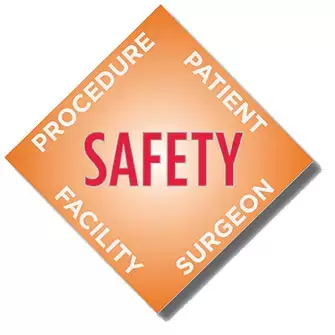|
As a plastic surgeon I am sometimes requested to treat wide scars or naevus. On occasions, these do not lend themselves to complete removal and direct closure in a single procedure. Patients may not be keen on the transfer of skin as flaps or treatment with grafts. Serial excision is a technique which is useful in such situations.
What is serial excision? As the word, 'serial' indicates this is a technique carried out in stages. It involves removal of a part of the lesion and closure of the wound edges. Due to the excision, the skin, and tissues surrounding the lesion stretch with the passage of time. This adaptive laxity allows the remaining part of the lesion to be removed at a later date. Which is the type of lesion which is amenable to serial excision? These include wide lesions like naevi (moles), scars, tattoos and, other benign conditions of the skin. How is serial excision done? A consultation helps in assessment of the lesion and to know if you are a right candidate for serial excision. After examination, the surgeon will be to tell the approximate number of sessions required for complete removal of the lesion. In adults, serial excision is usually carried out under local anesthesia with or without sedation. Patients are discharged after the procedure. Dressing changes and suture removal are done during the follow-up visits. Physical therapy in the form of massage and ultrasound therapy may be advised in certain cases. Another session of excision is scheduled once the tissues have developed adequate laxity on clinical examination. Who is a right candidate for serial excision? These include individuals with:
What are the advantages of serial excision? They would include the following:
In case of any doubts, we would be glad to hear from you.
Comments are closed.
|
AuthorI like to keep it simple. CategoriesArchives
June 2024
Categories |
- Home
-
Cosmetic
- Fat grafting
- Swellings and moles
- Scar revision
- Leukoderma (Melanocyte transfer)
- Hair transplant
- Facial rejuvenation procedures
- Nose job (Rhinoplasty)
- Cleft lip nose correction
- Ear (Otoplasty)
- Lip reduction
- Breast augmentation
- Breast reduction
- Tuberous breasts
- Axillary breasts
- Gynecomastia
- Liposuction
- Brachioplasty (Arm contouring)
- Abdominoplasty (Tummy tuck)
- Female genital rejuvenation
-
Reconstructive
- Contact
- Blog
- Home
-
Cosmetic
- Fat grafting
- Swellings and moles
- Scar revision
- Leukoderma (Melanocyte transfer)
- Hair transplant
- Facial rejuvenation procedures
- Nose job (Rhinoplasty)
- Cleft lip nose correction
- Ear (Otoplasty)
- Lip reduction
- Breast augmentation
- Breast reduction
- Tuberous breasts
- Axillary breasts
- Gynecomastia
- Liposuction
- Brachioplasty (Arm contouring)
- Abdominoplasty (Tummy tuck)
- Female genital rejuvenation
-
Reconstructive
- Contact
- Blog
You can leave us a comment using the contact form below.
We shall get back to you at the earliest.
We shall get back to you at the earliest.
Links
- Face procedures | Rhinoplasty, Otoplasty, Lip reduction, Fat grafting
- Body procedures | Gynecomastia , Breast reduction, Abdominoplasty, Brachioplasty, Liposuction
- Skin procedures | Scar revision, Moles, Leukoderma surgery
Let's be friends !
Follow us at Facebook and Twitter.
Follow us at Facebook and Twitter.
© 2024 Amicus Clinic (Plastic Surgery Centre, Trivandrum). All rights reserved.
 RSS Feed
RSS Feed



